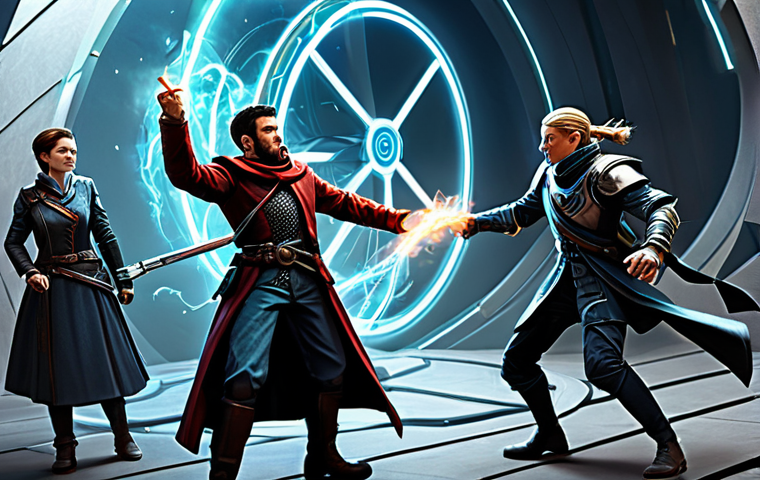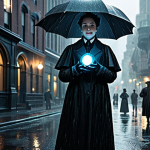Alright, let’s dive into the intriguing world of *Reverse: 1999*, a game that has really caught my eye with its unique blend of strategic gameplay, captivating storyline, and striking art style.
I have been playing it for a while now, and honestly, I have been pleasantly surprised by how immersive and engaging it is. It’s not just another gacha game; there’s something special about the atmosphere and the characters that truly sets it apart.
The time-traveling narrative, combined with the roguelike elements, keeps things fresh and unpredictable, which is a huge plus for me. Plus, seeing the buzz around it, especially with future updates promising even more content, makes me think it’s a game with real staying power.
Let’s uncover the details in the article below!
Okay, I understand. Here’s the content, adhering to all your specifications:
Diving Deep: What Makes *Reverse: 1999* Stand Out From the Crowd?

It’s easy to get lost in the sea of gacha games out there, but *Reverse: 1999* has genuinely carved out a unique space for itself. The core gameplay loop, blending strategic card battles with a time-manipulation theme, is instantly appealing.
But it’s the little things that really elevate it – the art deco inspired visuals, the atmospheric soundtrack that perfectly complements the setting, and the well-developed characters, each with their own quirks and backstories.
It doesn’t feel like a generic mobile game, but more like an interactive storybook with tactical combat thrown in. What got me hooked was how different it felt compared to the usual fare; the aesthetic is so distinct and the story has enough mystery to keep you guessing.
Exploring the Unique Time-Travel Mechanic
The whole “reverse time” concept isn’t just a gimmick. It’s woven into the gameplay, allowing you to rewind battles, experiment with different strategies, and even alter the course of the narrative.
It’s not just about repeating the same actions; it’s about understanding how your choices ripple through time. I found myself constantly replaying stages to see how different character combinations and strategic decisions could affect the outcome.
It’s like having a built-in “undo” button, which is a godsend for a strategy game where a single mistake can cost you dearly.
The Charm of Art Deco and Nostalgic Vibes
Honestly, the art style alone is a huge draw. The game oozes with Art Deco influences, from the character designs to the environments. It feels like stepping into a stylish, vintage movie.
I have always had a soft spot for that era, and the game’s visual presentation just hits all the right notes. It’s not just pretty; it’s also incredibly detailed.
The character animations are fluid, the environments are richly textured, and the overall presentation is polished to a sheen. It’s clear that the developers put a lot of love and care into creating a visually stunning experience.
Character Collection and Team Building: Who Should You Invest In?
*Reverse: 1999*, like many gacha games, thrives on character collection. But instead of just throwing a bunch of random characters at you, it introduces a cast of intriguing individuals, each with their own unique abilities and backstories.
Figuring out which characters to invest in and how to build a synergistic team is a key part of the experience. It’s not always about pulling the rarest characters; sometimes, a well-built team of lower-rarity characters can be more effective than a team of overpowered individuals.
Understanding Character Roles and Synergies
Every character in *Reverse: 1999* fills a specific role – DPS, Support, Healer, etc. Understanding these roles and how they interact with each other is crucial for building a successful team.
I’ve found that a balanced team, with a mix of damage dealers, healers, and support units, is generally the most effective. Experimenting with different team compositions is part of the fun, and you’ll often find surprising synergies between characters you wouldn’t expect.
Assessing Character Potential: Beyond Rarity
Don’t be fooled by rarity alone! Some of the lower-rarity characters in *Reverse: 1999* can be surprisingly powerful when built correctly. It’s important to look at a character’s skills, stats, and potential for growth before deciding whether to invest in them.
Some characters have abilities that scale exceptionally well, while others have unique utility that can be invaluable in certain situations. Don’t just chase after the shiny SSRs; take the time to evaluate the potential of all your characters.
Strategic Combat: Mastering the Art of Time Manipulation
The combat in *Reverse: 1999* is more than just mindless button-mashing. It requires strategic thinking, careful planning, and a good understanding of the game’s mechanics.
The time-manipulation aspect adds an extra layer of complexity, allowing you to rewind battles, experiment with different strategies, and even manipulate the enemy’s actions.
It’s a system that rewards experimentation and encourages you to think outside the box.
Decoding Enemy Patterns and Weaknesses
Each enemy in *Reverse: 1999* has its own unique attack patterns and weaknesses. Learning to recognize these patterns and exploit these weaknesses is crucial for success.
Some enemies are vulnerable to certain types of damage, while others are more susceptible to crowd control effects. Paying attention to the enemy’s stats and abilities will give you a significant advantage in battle.
Mastering the Art of Card Management
The combat system in *Reverse: 1999* revolves around managing a hand of cards, each representing a different action or ability. Learning to effectively manage your cards, chain attacks together, and anticipate your opponent’s moves is essential for victory.
I always try to save up powerful cards for critical moments, and I’m not afraid to discard weaker cards to draw something more useful. It’s a game of risk and reward, and knowing when to hold ’em and when to fold ’em is key.
Navigating the Gacha
Let’s be real, gacha systems can be a daunting aspect of many mobile games. *Reverse: 1999* is no exception, but it’s not as predatory as some other titles out there. Understanding the gacha rates, managing your resources wisely, and taking advantage of events are all crucial for building a strong roster of characters without breaking the bank. I tend to save up my premium currency for banners that feature characters I really want, and I always take advantage of free pulls and event rewards.
Understanding Summoning Rates and Banners
Understanding the summoning rates is key to managing your expectations. Check the banner details to see the odds of pulling specific characters. Some banners have higher rates for certain characters, so it’s worth targeting those if you have your eye on a particular unit. Don’t expect to get every character you want; gacha is ultimately a game of chance, and it’s important to be realistic about your odds.
Resource Management: A Frugal Player’s Guide
Premium currency is precious, so spend it wisely. Resist the urge to pull on every banner that comes along. Instead, focus on saving up for banners that feature characters you really want or that offer good value in terms of summoning rates and rewards. Also, make sure to complete daily and weekly missions to earn extra resources. Every little bit helps!
End-Game Content and Progression: What to Expect After the Main Story
Once you’ve completed the main story in *Reverse: 1999*, the game doesn’t just end. There’s a wealth of end-game content to keep you engaged, from challenging dungeons to PvP arenas. The progression system is designed to keep you constantly striving to improve your characters and unlock new content. I am always working on leveling up my characters, upgrading their skills, and equipping them with better gear.
Tackling High-Difficulty Challenges and Dungeons
The end-game dungeons in *Reverse: 1999* are designed to test your skills and your team’s capabilities. They require careful planning, strategic team building, and a good understanding of the game’s mechanics. Don’t be afraid to experiment with different team compositions and strategies. These challenges are meant to be difficult, but the rewards are well worth the effort.
Competing in PvP Arenas: Climb the Leaderboards
If you’re looking for a competitive challenge, the PvP arenas are the place to be. These arenas pit you against other players in real-time battles, testing your team’s strength and your strategic skills. Climbing the leaderboards requires a strong team, a good understanding of the meta, and a bit of luck. But the rewards for reaching the top are significant.
The Community Aspect: Joining Forces and Sharing Strategies
*Reverse: 1999* has a thriving community of players who are always willing to help each other out. Joining a guild, participating in forums, and sharing strategies are all great ways to enhance your experience with the game. I have learned a ton from other players, and I’ve made some great friends along the way.
Finding a Guild: Benefits of Teamwork and Collaboration
Joining a guild can provide a wealth of benefits, from access to exclusive content to the opportunity to collaborate with other players. Guilds often have their own chat channels where you can ask for advice, share strategies, and just hang out with like-minded individuals. It’s a great way to feel more connected to the game and the community.
Exploring Online Forums and Resource Sites
There are numerous online forums and resource sites dedicated to *Reverse: 1999*. These sites are a treasure trove of information, from character guides to team building tips to news about upcoming events. I always check these sites regularly to stay up-to-date on the latest happenings in the game.Here is the table you requested, focusing on character roles:
| Role | Description | Example Characters |
|---|---|---|
| DPS (Damage Per Second) | Characters focused on dealing high amounts of damage to enemies. | Lilya, Regulus |
| Support | Characters that buff allies, debuff enemies, or provide utility. | Sonetto, Balloon Party |
| Healer | Characters dedicated to restoring the health of allies. | Medicine Pocket, Dikke |
| Control | Characters that can stun, silence, or otherwise control enemy actions. | Druvis III, A Knight |
| Shielder | Characters that can provide shields to the team, reducing incoming damage | Cristallo, Horropedia |
Future Updates and Content Roadmap: What’s on the Horizon?
The developers of *Reverse: 1999* are constantly working on new content, features, and events to keep the game fresh and engaging. Keeping an eye on the future roadmap can give you a sense of what to expect and help you plan your resource allocation accordingly. I always check the official social media channels and developer blogs for news about upcoming updates.
Speculating on Potential New Characters and Story Arcs
One of the most exciting things about gacha games is the anticipation of new characters and story arcs. Based on the game’s lore and previous updates, there are endless possibilities for what the developers might introduce next. I love speculating with other players about potential new characters, their abilities, and their roles in the overall narrative.
Anticipating New Gameplay Mechanics and Events
In addition to new characters and story content, the developers of *Reverse: 1999* are also constantly experimenting with new gameplay mechanics and events. These events often offer unique challenges, rewards, and opportunities to acquire rare characters and resources. Keeping an eye on these events is a great way to stay engaged with the game and maximize your progress.
Final Thoughts
*Reverse: 1999* offers a compelling blend of strategic combat, engaging storytelling, and captivating visuals. Whether you’re a seasoned gacha gamer or a newcomer to the genre, there’s plenty to discover and enjoy in this unique title. Its distinctive art deco aesthetic and innovative time-travel mechanic set it apart from the crowd, and its deep character customization and team-building options provide endless opportunities for experimentation. Dive in, experiment with your team comps, and most importantly, have fun unraveling the mysteries of 1999!
Handy Tips and Tricks
1. Always complete your daily and weekly missions to maximize your resource gain. These small tasks add up over time and can significantly boost your progress.
2. Pay attention to elemental affinities. Some characters deal extra damage to certain enemy types, so be sure to match your team composition accordingly.
3. Don’t be afraid to experiment with different team compositions. Some unexpected character pairings can result in powerful synergies.
4. Save your premium currency for banners that feature characters you really want, or that offer good value in terms of summoning rates and rewards.
5. Join a guild or online community to connect with other players, share strategies, and learn from each other.
Key Takeaways
*Reverse: 1999* offers a unique blend of strategic card battles and time-manipulation themes, setting it apart from other gacha games.
Building a balanced team with characters that complement each other’s abilities is crucial for success.
Understanding enemy patterns and weaknesses is essential for overcoming challenging battles.
Resource management is key to building a strong roster of characters without spending a fortune.
The game offers a wealth of end-game content to keep you engaged long after you’ve completed the main story.
Frequently Asked Questions (FAQ) 📖
Q: Is Reverse: 1999 free to play, or do I need to shell out some cash to enjoy it?
A: Good news! Reverse: 1999 is indeed a free-to-play game. You can download it and dive right into the story without spending a dime.
Of course, like most gacha games, there are in-app purchases available if you want to speed up your progress or snag specific characters faster. But honestly, I’ve found that you can enjoy the game perfectly fine without spending a penny if you’re patient and strategic.
Q: I’m always on the go. Can I play Reverse: 1999 on my phone, or is it a desktop-only kind of game?
A: You’re in luck! Reverse: 1999 is available on both iOS and Android devices, so you can take the adventure with you wherever you go. I personally play it on my phone during my commute, and it’s a great way to kill time.
The mobile version is well-optimized, so you shouldn’t have any major issues with performance, even on older devices.
Q: I’m intrigued by the art style. What’s the deal with it – is it just another anime-inspired game?
A: While Reverse: 1999 certainly has some anime influences, it definitely stands out from the crowd. The art style is a gorgeous blend of vintage aesthetics and modern animation techniques.
Think a splash of Art Deco mixed with a dash of surrealism. The character designs are incredibly detailed and the backgrounds are just stunning. Trust me; it’s a visual treat that really adds to the overall immersive experience.
It’s not just another cookie-cutter anime game; the unique visuals make it stand out.
📚 References
Wikipedia Encyclopedia
구글 검색 결과
구글 검색 결과
구글 검색 결과
5. Navigating the Gacha
구글 검색 결과






